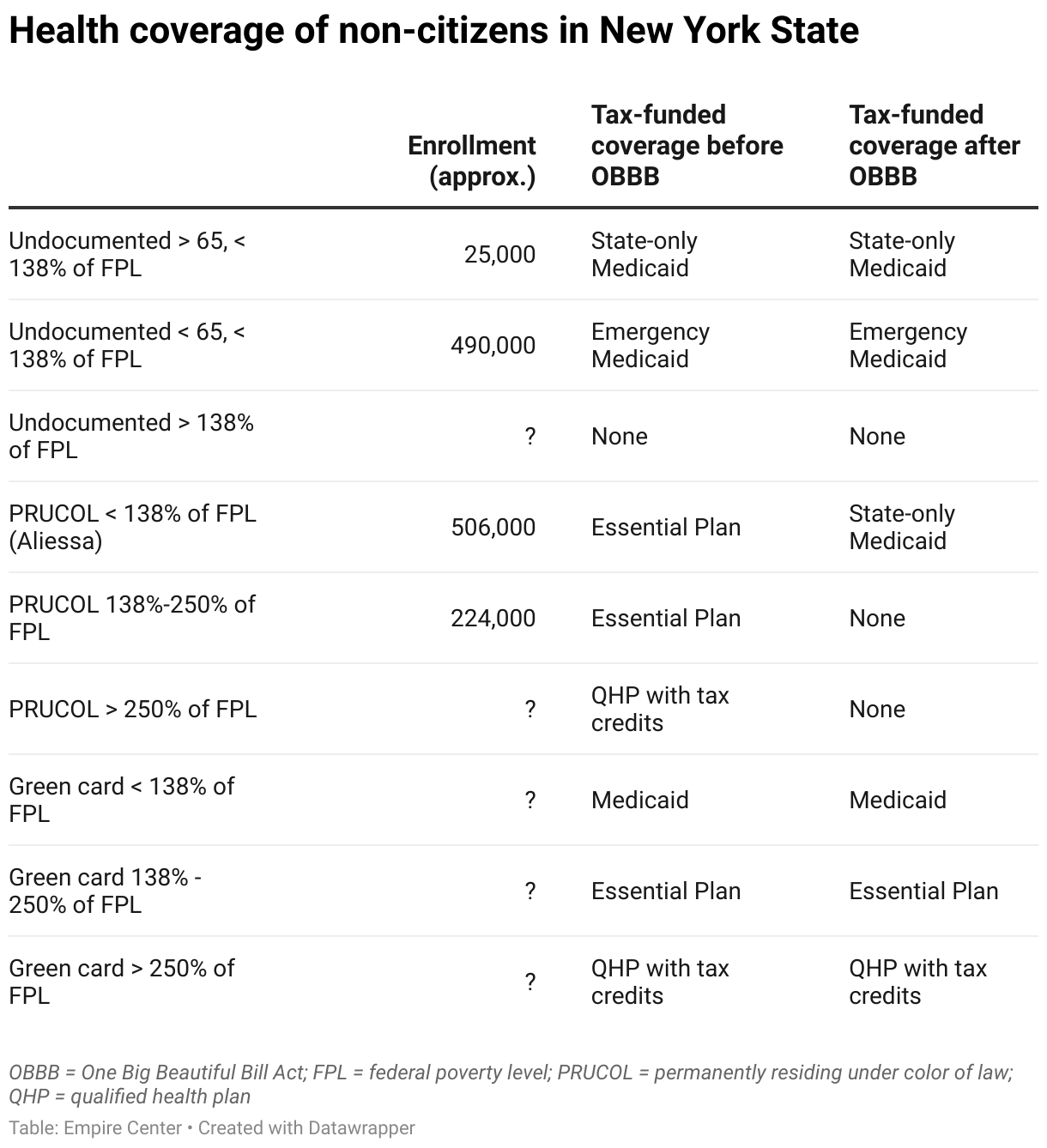A little-noticed New York program that provides Medicaid coverage to elderly undocumented immigrants was thrust onto the national stage this week as the White House sparred with congressional Democrats over the federal government shutdown.
The program, which was launched in 2024, would not be directly affected by the budgetary issues being debated in Washington – but has become fodder for the broader battle over immigration policy.
Vice President J.D. Vance spotlighted the program Wednesday in a post on X, the site formerly known as Twitter, as an example of Democrats providing government-funded health care to illegal aliens.
Vance was answering an earlier post from Sen. Sheldon Whitehouse, Democrat from Rhode Island, who had said, ” ‘Health care for illegal aliens’ is the new ‘immigrants are eating cats and dogs in Springfield’ ” and called the claim “a baseless lie.”
As of mid-day Friday, Vance’s retort – an image of a state flier touting a “new health insurance option for undocumented immigrants over 65” – had been reposted 20,000 times, liked 87,000 times and viewed 6.3 million times.
When commenters pointed out that New York was funding the coverage with its own money, not federal aid, Vance argued back that “money is fungible.”
“When the [federal] government gives billions of dollars to New York for Medicaid, that frees up state money in New York that can then be spent on illegals,” he argued.
The back-and-forth drew New York’s coverage expansion into a partisan standoff in Washington, in which Democrats are seeking concessions before providing the votes necessary to fully reopen the government. They have pushed for increased health funding as a condition of their support, and Republicans have accused them of wanting to spend the money on illegal aliens.
Regardless of the outcome, the program cited by Vance is not in jeopardy. So long as no federal dollars are used – as state officials insist – New York has the legal right to continue covering whoever it chooses.
Albany lawmakers authorized the Medicaid expansion in April 2022 as a late addition to the state budget for fiscal year 2023 – opening the program to low-income residents over 65 regardless of immigration status (see Part AAA of the Education, Labor and Family Assistance budget bill of 2022). Benefits included state-funded coverage for physician visits, prescription drugs, hospital stays, home health and nursing home care.
The program launched in January 2024, and 19,500 had signed up within the first three months, according to records provided earlier this year to the Empire Center.
Asked for enrollment and spending figures this week, a Health Department spokeswoman said: “The enacted [state fiscal year] 2023-2024 budget estimated 25,000 individuals would enroll in the new state-funded health program at an estimated cost of $230 million, which is consistent with actual experience.”
Those figures amount to less than one-half of 1 percent of the state’s overall Medicaid enrollment and budget. However, state officials have been struggling to control the rapidly growing cost of care for older Medicaid enrollees, especially those who qualify for home care.
The program also represents a fraction of the state’s coverage for non-citizens – most of which goes to immigrants who are not fully documented but legally authorized to stay, also known as “permanently residing under color of law” or PRUCOL (see table below). This group includes people who have been granted asylum or who have pending asylum applications and those covered by the Deferred Action for Childhood Arrivals.

New York provides health insurance for some 730,000 of these legally present immigrants through the Essential Plan – which up to now has been entirely funded by the federal government. That changed with passage of President Trump’s budget and tax cut bill this summer, which excludes most legally present immigrants from federal health funding.
When fully effective, that change is expected to reduce Essential Plan funding by $7.6 billion annually – which represents the bulk of the impact of the federal cutbacks in New York.
New York is obliged under a 2001 court ruling to provide care for some 506,000 Essential Plan enrollees who would otherwise qualify for Medicaid – i.e., with incomes below 138 percent of the federal poverty – whether or not federal funds are available.
The state is seeking the Trump administration’s permission to continue their coverage by drawing down a $9 billion surplus in the Essential Plan trust fund. When that money runs out in two or three years – or if the state’s application is denied – that group would likely be shifted to Medicaid with the state paying the full cost.
Coverage for immigrants in the Essential Plan with incomes above 138 percent of poverty will stop in 2027. They also no longer qualify for premium tax credits to subsidize the purchase of commercial insurance.
Fully undocumented immigrants, also known as illegal aliens, have long been excluded from most federally financed Medicaid coverage – with an exception for treatment in emergencies. Since 2014, New York has allowed undocumented residents register in advance for so-called emergency Medicaid if their incomes are below 138 percent of the poverty level. Enrollment in that category had reached almost 500,000 as of last year.
When the coverage for undocumented immigrants over 65 was approved, in April 2022, it was one of many decisions made as part of a $222 billion budget package. Most public criticism of the move came from immigrant advocacy groups, which had been pushing for the state to cover non-citizens of all ages.
Going forward, however, that policy choice could come under renewed scrutiny as lawmakers negotiate what is expected to be a tight budget for fiscal 2027.
The issue could also come up in next year’s gubernatorial race.
Governor Hochul’s expected Republican challenger, Rep. Elise Stefanik, responded to Vance’s post with a comment of her own:
.@KathyHochul is giving FREE Medicaid to illegal immigrants while hardworking New Yorkers struggle to afford healthcare and foot the bill with the highest taxes in the nation.
Kathy Hochul and NY Democrats puts illegals FIRST and New Yorkers LAST. https://t.co/2D9ysmUbyt
— Elise Stefanik (@EliseStefanik) October 1, 2025










